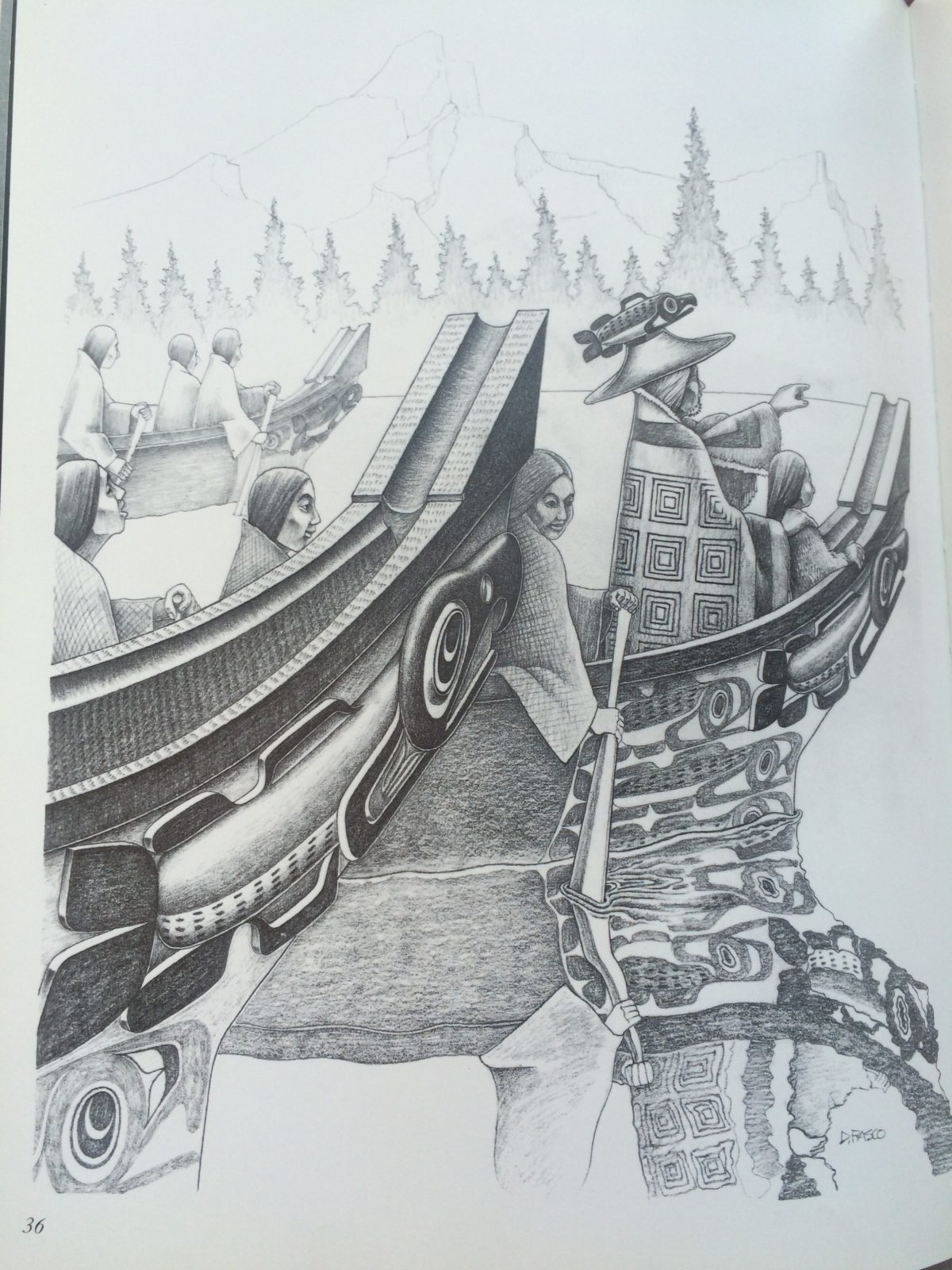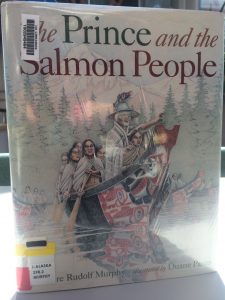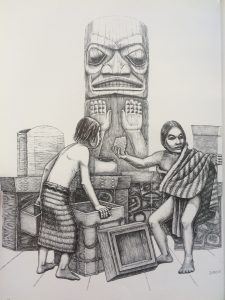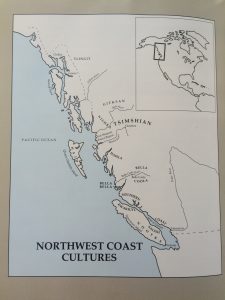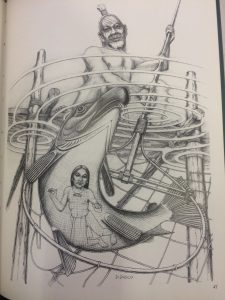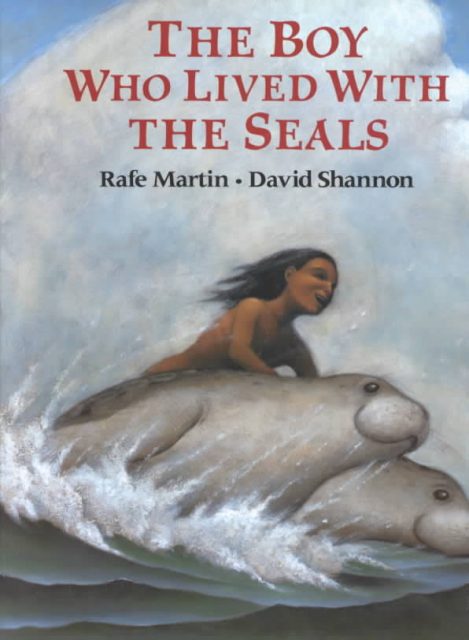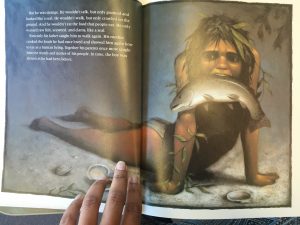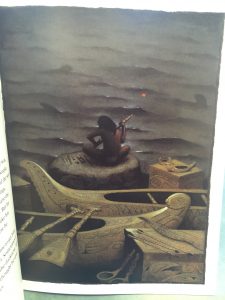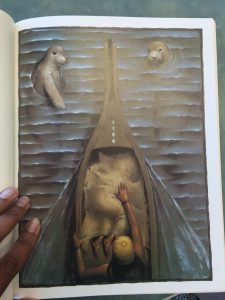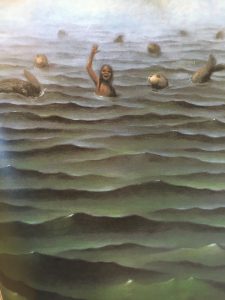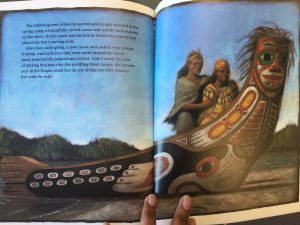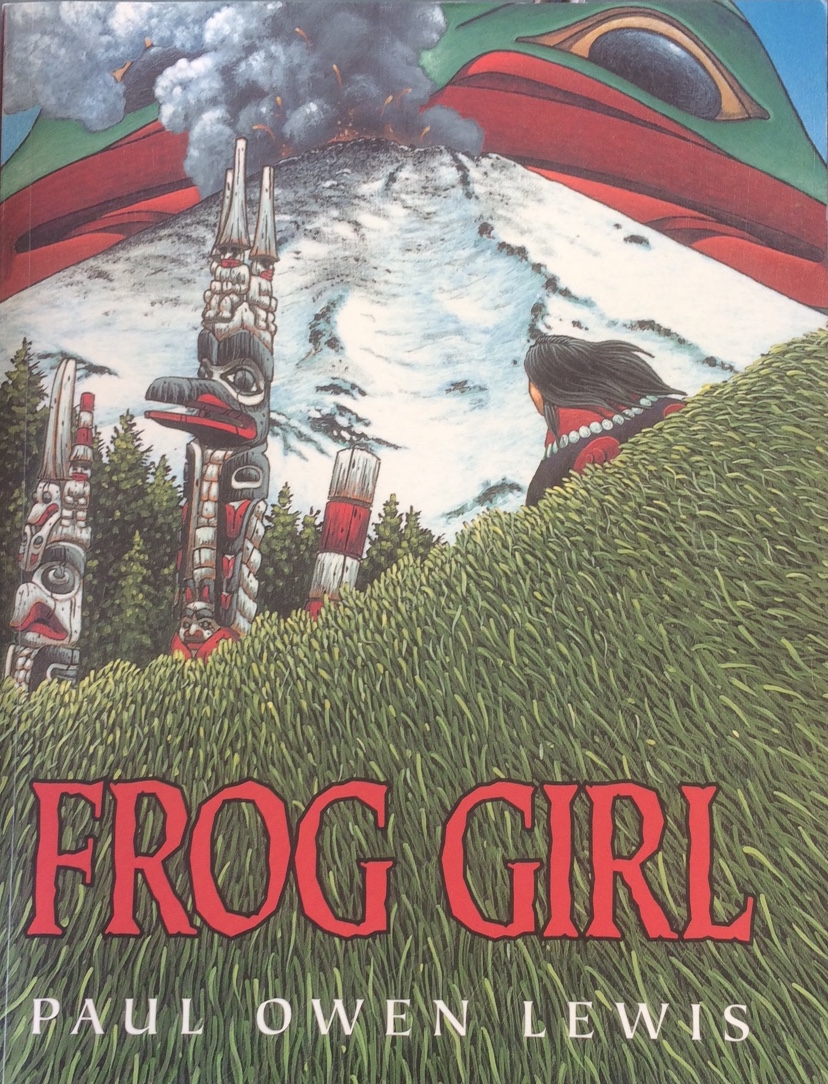The first book I picked up during our multicultural storybook exploration was called The Day the Sun was Stolen by Jamie Oliviero. I was drawn to this book because of the formline art it featured for illustrations. All of the characters and settings featured formline faces and designs, an element which captures the reader’s attention immediately. In this story, Raven creates the sun, which is quickly stolen from the world by Bear. Bear has heavy fur and decides to keep cool by stealing the sun and hiding it in his cave. Raven sends a young boy to rescue the sun from Bear. The boy disguises himself as a fish and waits for Bear to catch him. Bear catches the boy, but, too full to eat him, takes him back to his lair. The boy shaves off Bear’s fur and escapes in the night. When Bear wakes up, he is too cold and realizes that he must put the sun back up in the sky. After evaluating this book with the rubric for multicultural literature, I would give this book at 2.5 rating. For the category of “Quality Literature”, I would give the book a 2 rating because I feel that the story could have been more developed and delivered more convincingly. For the category of “Authority”, I would give the book a 2 rating because the author is not a member of the culture. However, he treats the story and the material sensitively, and the illustrator Sharon Hitchcock is of native ancestry, so these are some positive points. For the category of “Authenticity of Characters”, I would give the book a 2 rating because I felt that the characters could be more developed and multifaceted. For the categories of “Authenticity of Setting”, “Dialogue and Discourse”, and “Theme”, I would give the book a 3 rating for each category because the story was sensitively conveyed and did not resort to stereotypes. Overall, this comes out to a 2.5 rating.
The book I would use for a lesson in my content area is called Raven Goes Berrypicking by Anne Cameron. I feel that this storybook has great potential to be used in the music classroom because it can be used to introduce the study of chamber music. In this story, Raven is a trickster who has three friends named Puffin, Gull, and Cormorant. The four friends go canoeing, fishing, hunting for mussels, and berry picking as a team, however Raven finds a way to get out of doing work in every situation, and she is the antithesis of a team player. After being tricked during all of their adventures, Gull, Puffin, and Cormorant decide to teach Raven a lesson. They force her to do all the work she has avoided and tie up her beak, so that she cannot complain. In the end, Raven realizes that she has alienated her friends, and she is destined to live a solitary life, alone in the treetops. I would utilize the moral of this story to introduce some of the social, cooperative, and teamwork skills needed for playing chamber music. It could be a great intro to some teambuilding activities to prepare for performing in small groups. I would use the story to stress the importance of communication, respect, equality, teamwork, compromise, and cooperation in playing chamber music. Looking at the four characters of the book would be a great way to introduce the string quartet in a strings class. The class could look at the relationship of the four characters and compare with the relationship of the four players in a string quartet as a way of understanding the social dynamics that go on in an ensemble. The story could be a good way to broach the subject of maintaining healthy interpersonal relationships in a string quartet or any other type of ensemble. The main focus of my lesson would be to emphasize the importance of creating a strong interpersonal foundation and sense of responsibility and teamwork within a small ensemble.

